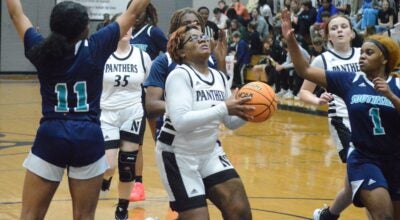Birds are everywhere in Beaufort County
Published 4:09 pm Saturday, May 8, 2021
|
Getting your Trinity Audio player ready...
|
It’s “Peak Week” in eastern North Carolina, just about the time for seeing and hearing the maximum number of spring migrants and breeding-season bird species. Why most seen and heard now? (1) There are many species present or passing through; (2) they are in their breeding plumages and “look like the pictures in the bird book;” and (3) they are actively singing as they get on territory and nest.
In abundance out there right now are Blue Grosbeak, Indigo Bunting, Eastern Kingbird, Summer Tanager, Red-Eyed Vireo, Prothonotary Warbler. All of these species are singing away and can be found readily by ear. Each breeds here and will stay for the warm season.
Indigo Bunting and Summer Tanager are found at the edge of hardwood forest overlooking open ground. Go out to deciduous forest by farmland and listen for their song. The Indigo Bunting is most surely not indigo, judged by a painter’s eye, but rather allover brilliant teal blue, with a blackish wing edge. It sings a rather long sequence (4 seconds or so) of paired, high-pitched phrases: “fire-fire, where-where, here-here, put-it-out, quick-quick.”
The Summer Tanager is orange-red (male) and deep schoolbus yellow (female) and says “peanut, sweet peanut, peanut butter” and “pi-tuck.” It’s neat to see that scarlet-red bird and that deep turquoise-blue one in a splendidly emerald-green tree in May!
By contrast to the edge habitat of those two species, the Blue Grosbeak is found in an overgrown field that’s coming up in small pines or sweet-gum trees. It perches on the tip of a sapling. The navy blue male is larger than the Indigo Bunting, has a very large wedge-shaped beak, and two bars on the wing: the upper is burnt-sienna brown, and the lower a buff tan. The female is allover a rich warm tan. You can see and hear a Blue Grosbeak at Mason’s Landing boat ramp (on Tranter’s Creek) now. Go there, wait, and listen, having learned the song online first.
Other migrants are “just passing through” — they can be heard here briefly, but will breed further north in the northern U.S. and Canada. These include a recent wave of Rose-Breasted Grosbeaks, seen at feeders in Greenville, Washington Park, and Washington the last week in April, as well as around the state. Each year offers a window of opportunity to see them at seed feeders in late April or so.
I reported on the first county record for Painted Bunting a few weeks ago. Since then, a birder in Pamlico Plantation reported two female Painted Buntings on a seed feeder maintained by Frank and Patti Phelps. A photo showed two chartreuse-green, bluebird-sized finches. Nice find!
I have heard of Painted Buntings showing up at feeders in Bath in past years as well. Usually these brilliantly colored (red, green, and blue) birds stick to the coast, making their home in the maritime woods of the barrier islands. They do stray inland from time to time, and many were noted over the past winter at feeders in and around New Bern.
Mississippi Kites are now being widely reported in various locations in Eastern N.C. I saw one over the Green Mill Run Greenway in Greenville, April 30. They have been observed nesting and flying near that site in summers past and should be fairly easy to find. They are “an inky mix of light gray and black,” soar deftly, catching dragonflies, and have narrow pointed wings and a long, square-tipped, triangular (when open) tail.
As you spot or hear seasonal migrants and returned breeding birds, be sure to add to your birding notebook (or other tally) the first date you observe them. Year over year, you’ll see a pattern of their arrival emerge and you’ll know when to expect your visitors next time.
Betsy Kane is a Washington resident who enjoys the outdoors.




